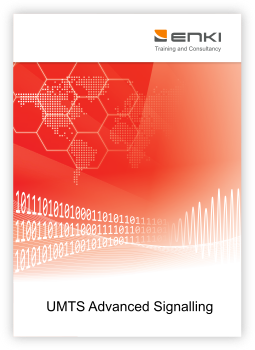ELP 0605 ★★★★ Public schedule
The course offers a complete understanding of all signalling protocols implemented in the Universal Mobile Telecommunications System. It introduces the general architecture of the UMTS network, defines interfaces and protocol stacks, and presents their description through functions and services they provide. Specific stress is placed on WCDMA Radio Access Network signalling, although Core Network signalling is also treated extensively. Most important network procedures, such as signalling connection establishment, UMTS attach, service request and soft handover are discussed and presented on signalling diagrams. The course is based on the 3GPP Technical Specifications and hence is vendor-independent.
Target audience – Who should attend and benefit
The course is addressed to network engineers and consultants who will work with UMTS system, as well as any technical staff requiring deeper appreciation of UMTS signalling.
Prerequisites – What you are supposed to know prior to the course
Ability to understand technical subjects. Technical background in mobile telecommunications is required. Basic knowledge of signalling and protocols is of advantage.
Course content – What you will learn
- General UMTS network architecture
- Introduction
- UTRAN
- Core Network
- User Equipment
- UMTS protocol architecture
- Introduction
- UMTS layers and planes
- UMTS strata
- UMTS bearers and QoS
- UMTS signalling models
- WCDMA radio interface
- WCDMA as a spread-spectrum radio system
- Bandwidth on demand
- Channelization and scrambling
- Modulation
- WCDMA channel concept
- UTRAN
- The general purpose of UTRAN
- UTRAN protocol model
- UTRAN functions
- Performance of Node B
- Performance of RNC
- Radio Resource Management (RRM)
- Signalling on Uu interface
- Layer 3 control plane – Radio Resource Control (RRC) protocol
- Layer 2 protocols common to control and user planes
- Layer 2 protocols specific to user plane
- Layer 1 – physical layer
- Signalling on Iub interface
- Protocol model for Iub
- Node-B Application Part (NBAP)
- Iub frame protocols
- Signalling on Iur interface
- Iur signalling procedures
- Protocol model for Iur
- Radio Network Subsystem Application Part (RNSAP)
- Iur frame protocols
- Signalling on Iu interface
- General description of Iu interface
- Protocol model for Iu-CS
- Protocol model for Iu-PS
- Radio Access Network Application Part (RANAP)
- Iu user plane protocols (frame protocols)
- Core Network
- The Core Network protocol model
- Non-Access Stratum protocols
- Network control signalling protocols
- Packet data backbone network protocol
- Transit network control protocols
- Service control protocols
- Transport network protocols
- Introduction
- TDM
- ATM and its Adaptation Layers (AAL2, AAL5)
- SAAL and MTB-3b
- IP
- SCCP
- Basic and advanced traffic cases
- Basic model of a UMTS transaction
- Mobility Management (MM) procedures
- Radio Resource Management (RRM) procedures
- Calls
Duration – How long it takes
5 days which is equivalent to 30 hours of lecture.

